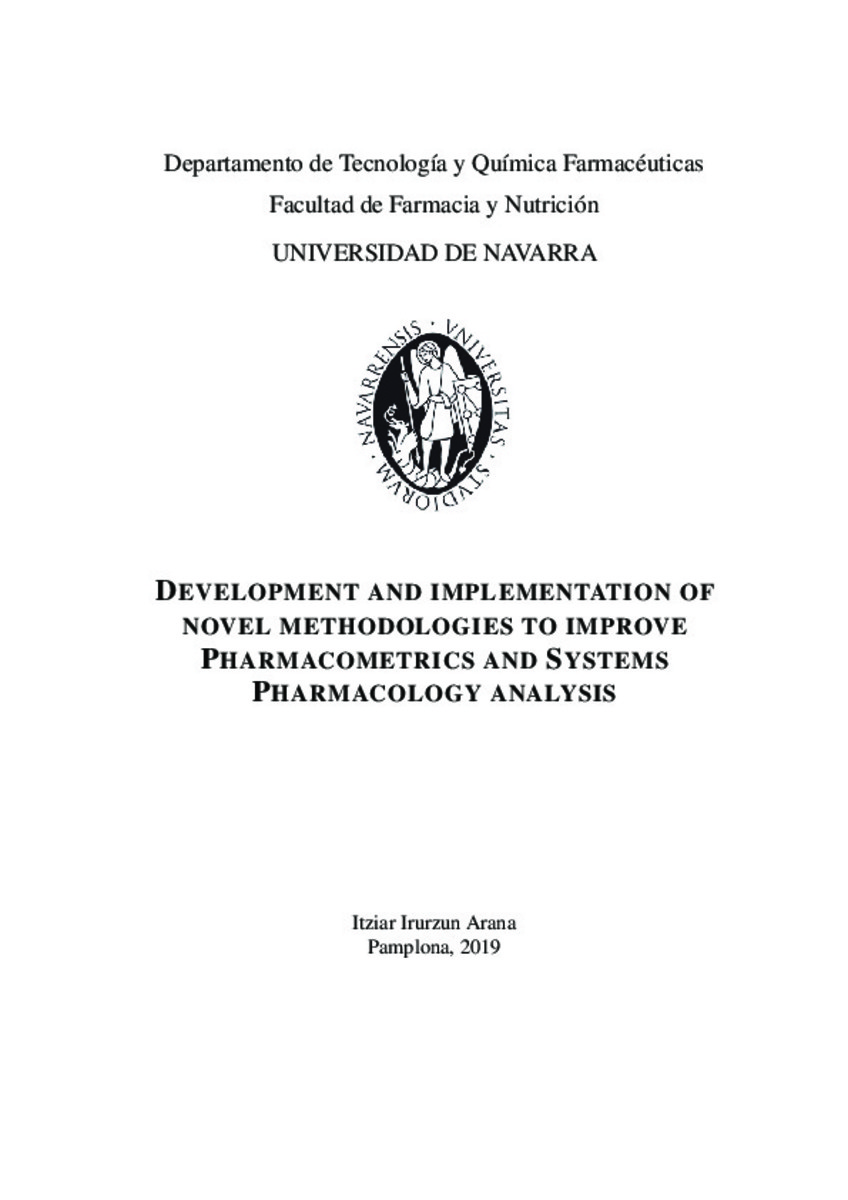Development and implementation of novel methodologies to improve Pharmacometrics and Systems Pharmacology analysis
Keywords:
Farmacodinamia
Biomatemáticas
Análisis de datos
Análisis de fármacos
Materias Investigacion::Farmacia::Farmacia y farmacología
Citation:
IRURZUN ARANA, Itziar. “Development and implementation of novel methodologies to improve Pharmacometrics and Systems Pharmacology analysis”. Fernández, J. I. (dir.). Tesis doctoral. Universidad de Navarra, Pamplona, 2019.
Statistics and impact
0 citas en

0 citas en

Items in Dadun are protected by copyright, with all rights reserved, unless otherwise indicated.







